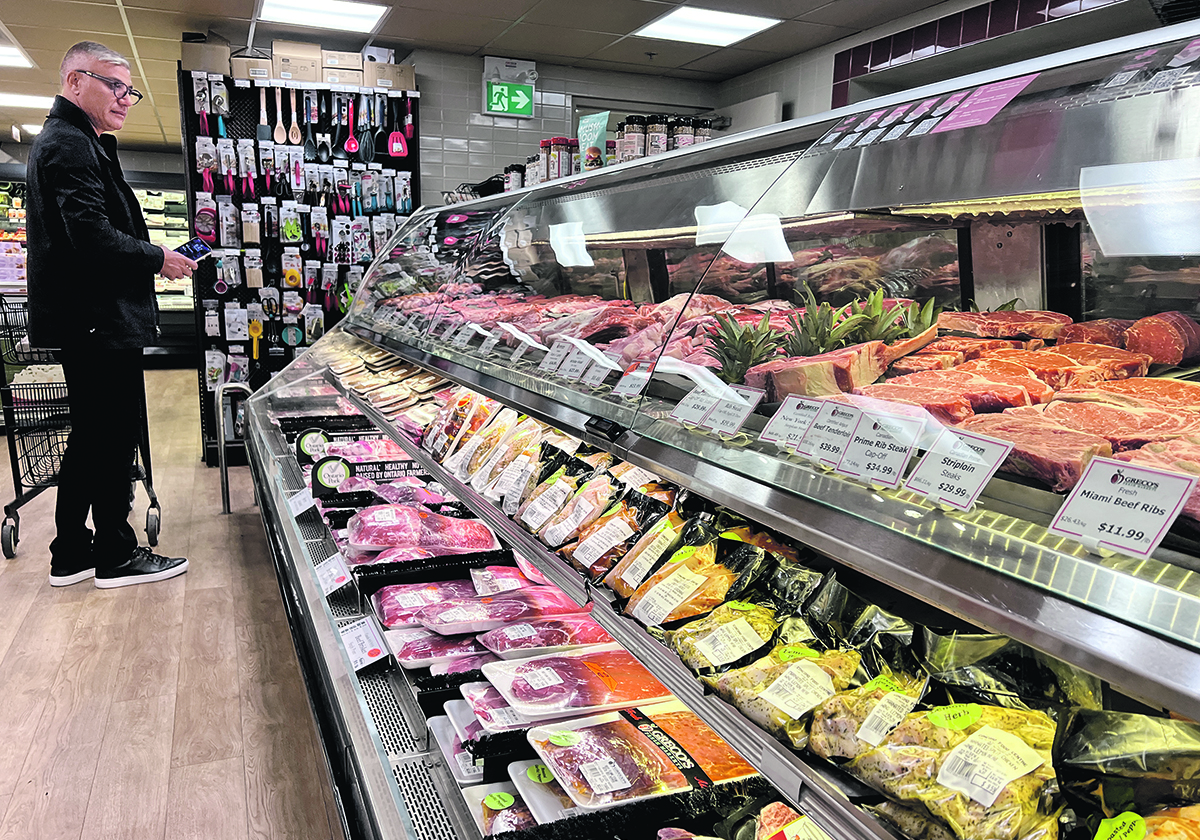Researchers say meat will see the greatest price hikes, followed by vegetables, bakery products and restaurant meals
Glacier FarmMedia – Grocery shoppers can expect higher food prices in 2025, according to the latest edition of Canada’s Food Price Report.
The report, which predicts food prices and trends for the coming year, projects a three to five per cent increase in Canadian food prices. The average family of four can expect to spend $16,833.67 on food next year, the report said. That’s an increase of $801.56 compared to 2024.
The annual report, released Dec. 5, is a joint effort by researchers from Dalhousie University, University of Guelph, University of Saskatchewan and University of British Columbia.
Read Also

Vintage power on display at Saskatchewan tractor pull
At the Ag in Motion farm show held earlier this year near Langham, Sask., a vintage tractor pull event drew pretty significant crowds of show goers, who were mostly farmers.
The report draws on predictive analytics, economic models and expert insights to devise its forecast.
For 2025, it expects the greatest price hikes will come in meat. Costs in that category are projected to rise four to six per cent. Vegetables, bakery products and restaurant meals are expected to increase by three to five per cent.
Dairy prices are expected to climb two to four per cent, while fruits and seafood are likely to see smaller price increases of one to three per cent.
Regionally, the report said Newfoundland and Labrador, Nova Scotia and Quebec are expected to see above-average food price increases in 2025. Alberta, British Columbia and Ontario are projected to experience below-average hikes.
The northern territories are not included in the report’s forecasts, but food costs in these regions are often double or triple the national average due to high transportation costs, harsh weather and logistical challenges.
The expected higher food costs were attributed to climate change, geopolitical tensions, labour shortages and disruptions in Canada’s food supply chain. Depreciation of the Canadian dollar, which makes imported goods more expensive, was also cited.
Meat price increases in particular were largely linked to extreme weather in the Prairies over the past few years, said Stuart Smyth, one of the report’s authors and industry research chair in agri-food innovation at the University of Saskatchewan.
Droughts and floods in key agricultural regions have disrupted production and supply chains. Additionally, wildfires in Western Canada earlier this year blocked rail lines, leading to transportation delays.
A weak La Niña is also predicted to bring below-average temperatures to much of the country and above-average precipitation to Eastern Canada, adding more uncertainty to the food system.
Canada also has its smallest beef herd in decades.
“I think meat prices, particularly beef, are going to be higher for probably the next two, three, possibly even four years, because if we got normal moisture next year, it’s going to take a while for farmers to increase the size (of the herd) and for those cows to get to be productive,” Smyth said.
Ongoing disputes at major ports and railways have disrupted the movement of goods, leading to increased transportation costs and delays in shipments of perishable items, the report said.
Authors also pointed to agriculture’s longstanding labour shortage, with an estimated 100,000 jobs expected to be vacant by 2030.
“When labour availability isn’t known, that reduces the amount of food that can be processed during a day,” Smyth said. “Once those reductions happen, a ripple effect occurs.”
Insufficient staff means lower production, impacting the supply chain, he added.
The re-election of Donald Trump in the United States may also affect Canada’s food industry. If Trump stands by his threat to impose a 25 per cent tariff on goods from Canada when he takes office in January, Canada’s food exports will suffer, Smyth said.
“That means that some food we would have exported will stay in Canada, so we would then have a bit of a surplus. One impact that comes from that is that it may contribute to lower food prices.”
The report also noted that less restrictive agricultural policies in the U.S. could increase competition and widen the cost gap between Canadian and American producers.
Carbon pricing in Canada is having a noticeable impact on food prices, contributing to increased food insecurity across the country, the report said. Authors cited a record two million visits to food banks in March, reflecting a 90 per cent increase in use since 2019.
A national survey found that 45 per cent of Canadians are struggling to meet daily expenses due to rising prices, prompting many to adopt cost-saving strategies such as switching to discount brands, purchasing in bulk and reducing consumption of non-essential items.
“It’s a horrible thing for a country as wealthy and as capable of producing food as Canada is. So, it’s clearly sending a message that those households on incomes or single-income households are really struggling right now,” Smyth said.
“Repealing the carbon tax from the transportation of food is one way to do it, and I think those are the hard decisions that need to be discussed.”
The report offers some hope. Implementation of the Grocery Code of Conduct in mid-2025 aims to create a fairer and more competitive market by empowering smaller food manufacturers and retailers. However, the report emphasizes that oversight will be crucial for its success.
The code has also drawn criticism, with skeptics arguing that, as a voluntary code, the measure will be toothless.
The report calls for stronger support of domestic food production, improved supply chain resilience and targeted measures to address food insecurity, particularly in northern and remote communities. Enhanced data collection is another suggestion, meant to better understand food challenges in Canada’s north.


















